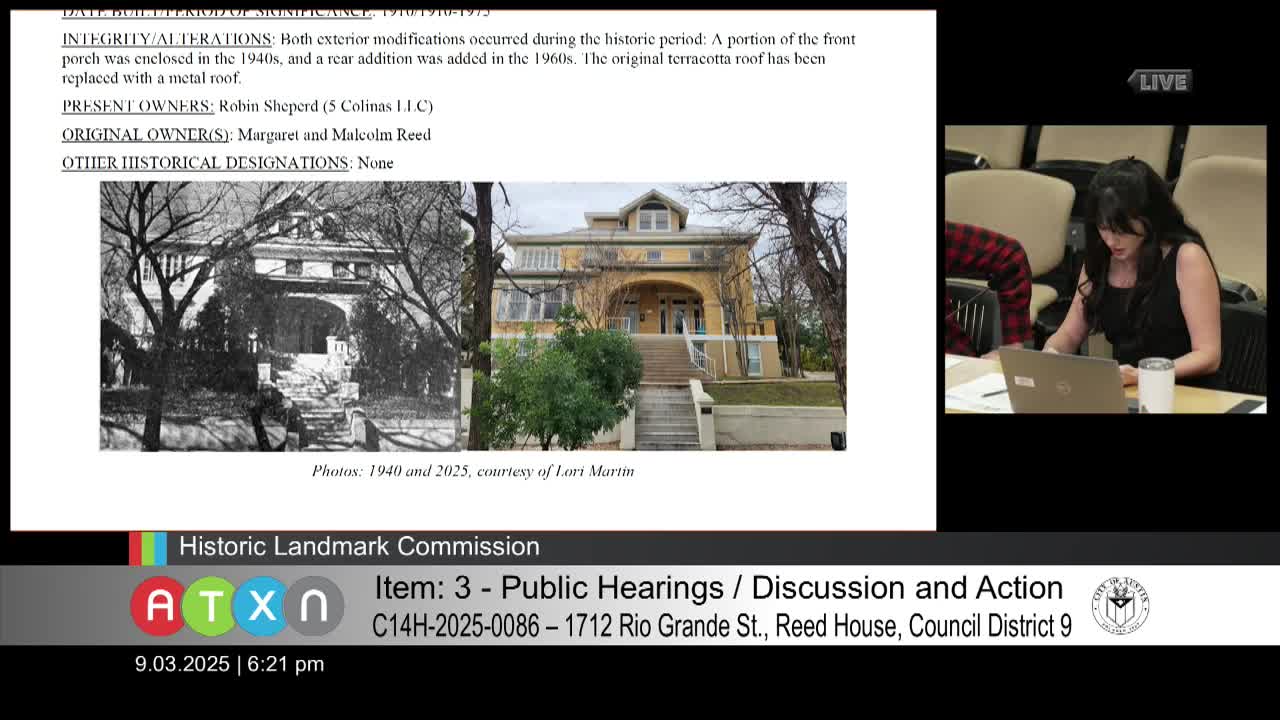Historic 4 Square Home on Rio Grande Street Represents Unique Austin Architectural Style
September 03, 2025 | Austin, Travis County, Texas
Thanks to Scribe from Workplace AI , all articles about Texas are free for you to enjoy throughout 2025!

This article was created by AI using a video recording of the meeting. It summarizes the key points discussed, but for full details and context, please refer to the video of the full meeting. Link to Full Meeting
The house is characterized by its horizontal lines, open interiors, and seamless indoor-outdoor living spaces. Although the architect behind this unique design remains unknown, some evidence points to Hal Thompson, a traditionalist known for his classical designs for Dallas's elite. Historian Laurie Martin suggests that Charles Page, a prominent figure in Austin's architectural scene, may have been commissioned by Margaret and MH Reed to create a building reminiscent of his earlier work at 1410 Rio Grande Street.
The home has ties to several influential figures in Austin's history, including Malcolm Reed, a titan of industry in the early 20th century, and former Texas Governor Dolph Briscoe Jr., who lived there as a UT student. The property has undergone some modifications over the years, including the enclosure of a front porch in the 1940s and a roof replacement in the 1960s. However, these changes have not compromised the building's original integrity.
As discussions continue about the house's historical significance, it stands as a testament to Austin's architectural heritage and the stories of those who shaped the city.
Converted from Austin - Historic Landmark meeting on September 03, 2025
Link to Full Meeting
Comments
View full meeting
This article is based on a recent meeting—watch the full video and explore the complete transcript for deeper insights into the discussion.
View full meeting
